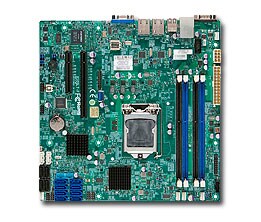I'm in the process of building a new storage server to replace my 18 TB NAS.
The server is almost finished, it's now down to adding disk drives. I'm using the HGST 4 TB 7200 RPM drive for this build (SKU 0S03356) (review).
I have not bought all drives at once, but slowly adding them in smaller quantities. I just don't want to feel too much pain in my wallet at once I guess.
According to my own tests, this drive has a read/write throughput of 160 MB/s, which is in tune with it's specification.
So the theoretical performance of a RAID 0 with 16 drives x 160 MB/s = 2560 MB/s. That's over 2.5 gigabytes per second.
This is the actual real-life performance I was able to achieve.
root@nano:/storage# dd if=pureawesomeness.dd of=/dev/null bs=1M
1000000+0 records in
1000000+0 records out
1048576000000 bytes (1.0 TB) copied, 453.155 s, 2.3 GB/s
Personally, 2.3 GB/s is not too shabby in my opinion. Please note that I used a test file of one terabyte, so the 16 GB of RAM my server has, doesn't skew the result.
This result is very nice, but in practice almost useless. I can saturate dual 10 Gbit NICs with this system, but I don't have that kind of equipment or any other device that could handle such performance.
But I think it's amazing anyway.
I'm quite curious how the final 24 drive array will perform in a RAID 0.



